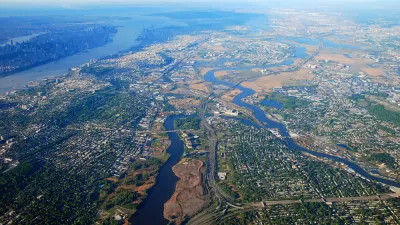Megacities are the future of our planet. Author James Canton offers several visions and strategies to begin planning for them.
In "prescient article" in the journal Significance futurist James Canton argues that cities will diversify as they get larger, writes Michael Batty on his A Science of Cities blog.
Megacities will become the primary form for future urbanization, Canton argues. The growth of the new megacities may ultimately only be constrained only by the ability of a single government to manage them. Canton lays out several possible models for the new megacities, such as Chaos City (think Mogadishu) to Gang City (think Afghanistan), Fortress City (think Dubai) and the Smart City.
From Canton's article:
"By 2040, most of the world's population will be living in megacities, writes Canton. A megacity is a city containing at least 10 million people. Megacities already exist. There are as many as 26 of them on the planet today...
"The Smart City is coming and the megacity will bring it soon. The actual development of artificial intelligence as an incentive to meet the challenges of the Smart City will set the stage for the future. Nine billion people will be the largest concentrations of human density in the history of civilisation. Some find it almost impossible to imagine it all turning out well... What planners, policy-makers, leaders and social scientists should be doing today is getting ready with new models of planetary management. Our lack of readiness for the future is endemic in our civilisation. But it would be good to get this forecast right and prepare for the megacity future."
The link below is to the official Wiley Online Library website, which requires a fee to view this paper. However, a PDF of the article(1.4 MB) is available from the Institute for Global Futures website.
Thanks to Michael Batty
FULL STORY: The extreme future of megacities

Maui's Vacation Rental Debate Turns Ugly
Verbal attacks, misinformation campaigns and fistfights plague a high-stakes debate to convert thousands of vacation rentals into long-term housing.

Planetizen Federal Action Tracker
A weekly monitor of how Trump’s orders and actions are impacting planners and planning in America.

San Francisco Suspends Traffic Calming Amidst Record Deaths
Citing “a challenging fiscal landscape,” the city will cease the program on the heels of 42 traffic deaths, including 24 pedestrians.

Defunct Pittsburgh Power Plant to Become Residential Tower
A decommissioned steam heat plant will be redeveloped into almost 100 affordable housing units.

Trump Prompts Restructuring of Transportation Research Board in “Unprecedented Overreach”
The TRB has eliminated more than half of its committees including those focused on climate, equity, and cities.

Amtrak Rolls Out New Orleans to Alabama “Mardi Gras” Train
The new service will operate morning and evening departures between Mobile and New Orleans.
Urban Design for Planners 1: Software Tools
This six-course series explores essential urban design concepts using open source software and equips planners with the tools they need to participate fully in the urban design process.
Planning for Universal Design
Learn the tools for implementing Universal Design in planning regulations.
Heyer Gruel & Associates PA
JM Goldson LLC
Custer County Colorado
City of Camden Redevelopment Agency
City of Astoria
Transportation Research & Education Center (TREC) at Portland State University
Jefferson Parish Government
Camden Redevelopment Agency
City of Claremont





























